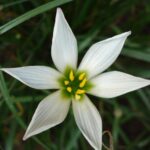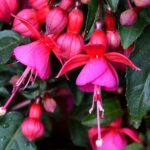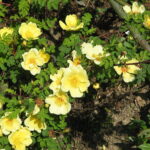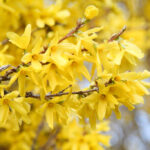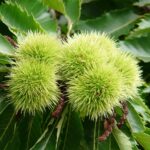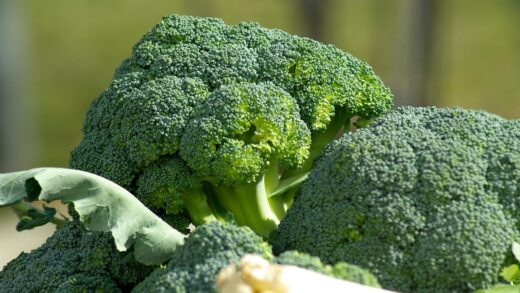Diseases and pests of Persian onion
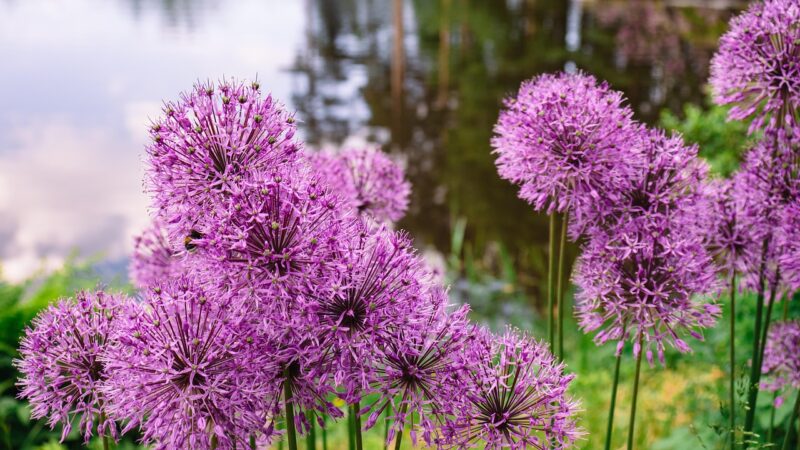
While Allium aflatunense is renowned for its robust nature and general resistance to many garden ailments, particularly browsing mammals like deer and rabbits, it is not entirely immune to problems. Like all plants, it can fall prey to specific diseases and pests, especially when cultivated in less-than-ideal conditions. Understanding the potential threats and knowing how to identify, prevent, and manage them is key to maintaining a healthy and thriving display. The best defense is always a good offense, which involves creating a growing environment that promotes plant vigor and discourages pathogens. This article provides an in-depth look at the common diseases and pests that can affect the Persian onion, along with strategies for effective and responsible management.
Preventative measures for healthy plants
The most effective strategy for dealing with diseases and pests is to prevent them from becoming established in the first place. This begins with providing the optimal growing conditions for Allium aflatunense. Planting bulbs in a site with full sun and, most importantly, exceptionally well-drained soil is the primary line of defense. Strong, healthy plants growing in their preferred environment are inherently more resilient and better able to withstand pressure from pests and diseases. Conversely, plants that are stressed by poor drainage, inadequate light, or nutrient deficiencies are far more susceptible to attack.
Good garden hygiene plays a crucial role in preventing the spread of pathogens. This includes promptly removing and destroying any plant material that shows signs of disease. At the end of the growing season, after the foliage has completely died back, it is wise to clear away the debris rather than letting it decompose in place, as it can harbor fungal spores or overwintering pest eggs. Keeping the area around your alliums free from weeds is also important, as weeds can compete for resources and act as host plants for pests and diseases.
Proper spacing when planting the bulbs is another key preventative measure. Spacing bulbs about 15-20 centimeters apart ensures that there is adequate air circulation around the foliage as the plants grow. This airflow helps the leaves to dry quickly after rain or morning dew, creating a less hospitable environment for fungal diseases like downy mildew and rust, which thrive in damp, stagnant conditions. Overcrowding can lead to a humid microclimate at the base of the plants, significantly increasing the risk of a fungal outbreak.
Crop rotation, a common practice in vegetable gardening, is also beneficial for ornamental alliums, especially if you have experienced disease issues in the past. Avoid planting alliums in the same spot year after year. Pathogens such as onion white rot can build up in the soil over time. Rotating their location every three to four years can help to break the life cycle of these soil-borne diseases. When purchasing new bulbs, always inspect them to ensure they are firm and free from any soft spots, mold, or signs of damage.
More articles on this topic
Common fungal diseases affecting alliums
One of the most serious diseases that can affect Allium aflatunense is onion white rot (Sclerotium cepivorum). This is a soil-borne fungal disease that attacks the roots and basal plate of the bulb, causing the foliage to yellow and wilt from the top down. A tell-tale sign is the presence of a fluffy white mycelial growth on the base of the bulb, often with small black sclerotia, which look like poppy seeds. Unfortunately, there is no effective chemical cure for white rot, and the sclerotia can remain viable in the soil for many years. If you discover it, you must remove and destroy the infected plants and avoid planting any allium species in that area for at least 8 to 10 years.
Downy mildew (Peronospora destructor) is another fungal disease that can be problematic, particularly during cool, damp weather. It typically appears as pale, oval-shaped patches on the leaves, which may later become covered in a purplish-grey, fuzzy mold, especially on the underside of the foliage. The affected leaf tissue will eventually die, which can reduce the plant’s ability to photosynthesize and store energy in the bulb. To manage downy mildew, ensure good air circulation, avoid overhead watering, and remove infected leaves promptly. In severe cases, a fungicide may be necessary.
Rust (Puccinia allii) is another foliar disease that can affect Persian onions. It manifests as small, orange to reddish-brown pustules on the leaves. While a minor infection is unlikely to cause serious harm to the plant, a severe case can weaken it by reducing the photosynthetic area of the leaves. As with other fungal diseases, rust thrives in damp conditions. Good air circulation and keeping the foliage dry are key preventative measures. Removing the affected leaves as soon as you spot them can help to prevent the disease from spreading.
Bulb rot, caused by various fungi such as Fusarium or Penicillium, is primarily a problem of poor drainage or improper storage. The symptoms are a soft, mushy bulb that may have a foul odor. This is why well-drained soil is so critical during the growing season and why the bulbs need a dry dormancy period. If you lift and store bulbs over winter, they must be cured properly and stored in a cool, dry, and well-ventilated location to prevent rot from developing.
More articles on this topic
Identifying and combating common pests
The onion fly, or onion maggot (Delia antiqua), is a pest that can cause significant damage. The adult fly lays its eggs near the base of the allium plant. When the larvae (maggots) hatch, they burrow down into the soil and feed on the bulb and roots. This feeding damage causes the foliage to wilt, yellow, and eventually die. Infested bulbs will become soft and rotten. Prevention is the best approach. Covering the emerging plants with a fine insect-proof mesh in late spring can prevent the adult flies from laying their eggs. If an infestation occurs, affected plants should be removed and destroyed to prevent the maggots from pupating in the soil.
Thrips are another pest that can occasionally trouble Allium aflatunense. These are tiny, slender insects that feed by piercing the plant’s leaves and sucking out the cellular contents. This results in a silvery or stippled appearance on the foliage and can reduce the plant’s overall vigor. Thrips are most active in hot, dry weather. A strong jet of water from a hose can often be enough to dislodge a small population. For more severe infestations, insecticidal soaps or neem oil can be effective, but they must be applied thoroughly, ensuring contact with the pests.
Slugs and snails can sometimes be a problem, particularly in the early spring when the new, tender shoots are emerging. They can graze on the young leaves, leaving behind ragged holes and their characteristic slime trails. There are numerous methods for controlling slugs and snails, ranging from physical barriers like crushed eggshells or copper tape to biological controls like nematodes. Hand-picking them at night is also an effective, albeit labor-intensive, method. It is important to control them early before the plants grow large.
Nematodes are microscopic roundworms that live in the soil. While many are beneficial, some species, like the stem and bulb nematode (Ditylenchus dipsaci), can be destructive pests of alliums. They infest the bulb, causing distorted and swollen tissue, a condition often referred to as “onion bloat.” The bulb’s tissue becomes soft and spongy, leading to the decline and death of the plant. This pest is difficult to control. The best prevention is to purchase certified disease-free bulbs and to practice crop rotation, as the nematodes can persist in the soil.
Viral diseases and their management
Like many plants, alliums can be susceptible to various viral diseases, often collectively referred to as onion mosaic viruses. These viruses are typically transmitted by aphids that feed on an infected plant and then move to a healthy one, transferring the virus in the process. The symptoms can be quite variable and may include mottling or mosaic patterns of light green or yellow on the leaves, streaking on the foliage, and a general stunting of the plant’s growth.
Unfortunately, there are no chemical cures for plant viruses. Once a plant is infected, it is infected for life, and it can act as a reservoir for the disease, allowing it to be spread to other susceptible plants in your garden. Therefore, the primary management strategy is removal and destruction. If you identify a plant that you suspect is infected with a virus, you should dig it up, including the bulb, and either burn it or dispose of it in the municipal waste. Do not add it to your compost pile, as this will not destroy the virus.
The key to preventing viral diseases is to control the vectors that spread them, which in this case are primarily aphids. Regularly inspect your plants for the presence of aphids, paying close attention to the undersides of leaves and new growth. If you find them, you can often control small infestations by washing them off with a strong spray of water. For larger populations, applications of insecticidal soap or horticultural oil can be effective. Encouraging natural predators like ladybugs and lacewings in your garden can also help to keep aphid populations in check.
When purchasing new bulbs, always buy from reputable sources to reduce the risk of introducing virally infected stock into your garden. While viruses in ornamental alliums are not an extremely common problem, being vigilant and practicing good sanitation and pest control can significantly minimize the risk. By promptly removing any suspicious-looking plants, you can prevent the establishment and spread of these incurable diseases.
Integrated pest management strategies
An integrated pest management (IPM) approach is the most sustainable and environmentally responsible way to handle pests and diseases on Allium aflatunense. IPM is a holistic strategy that combines various techniques to keep pest and disease populations below a level that causes significant damage, rather than aiming for complete eradication. It prioritizes preventative and cultural controls first, resorting to chemical interventions only when absolutely necessary. This approach minimizes risks to human health and the environment.
The foundation of any IPM program is cultural control, which involves creating a healthy growing environment. As discussed, this means selecting the right site with full sun and good drainage, preparing the soil well, spacing plants correctly for good air circulation, and practicing good sanitation by removing plant debris. These actions make the plants less susceptible to problems and the environment less favorable for pathogens and pests. Regular monitoring of your plants is also a cornerstone of IPM, as early detection of a problem makes it much easier to manage.
Biological control is another key component of IPM. This involves using natural enemies to control pest populations. You can encourage beneficial insects like ladybugs, hoverflies, and lacewings, which are voracious predators of aphids, by planting a diverse range of flowering plants that provide nectar and pollen. Avoiding the use of broad-spectrum chemical pesticides is also crucial, as these will kill beneficial insects just as effectively as they kill the pests, disrupting the natural balance of your garden’s ecosystem.
If cultural and biological controls are not sufficient to manage a pest or disease outbreak, the next step in an IPM program is to consider targeted, low-impact chemical controls. This includes using products like horticultural oils, insecticidal soaps, or neem oil, which are generally less harmful to beneficial insects and have a shorter residual effect in the environment than synthetic pesticides. Systemic, broad-spectrum pesticides should be considered an absolute last resort and used only when a specific, identified problem poses a serious threat to the plant’s survival.








